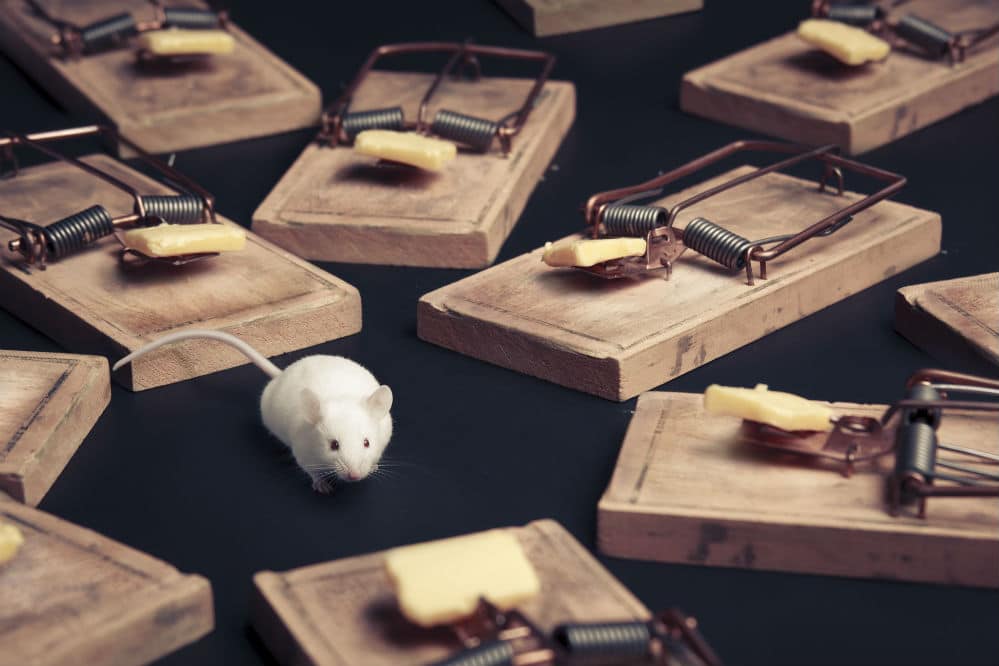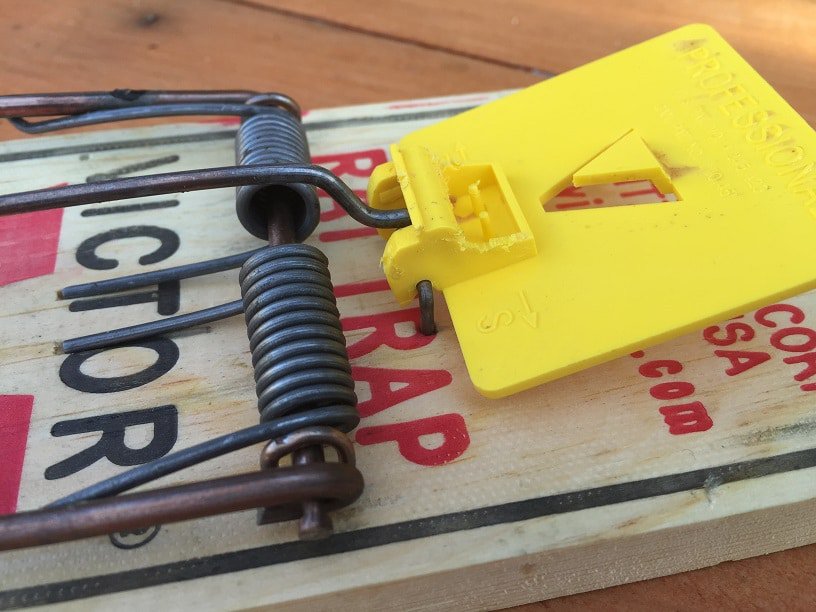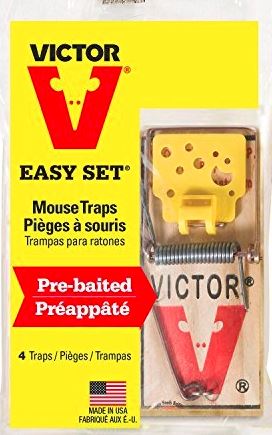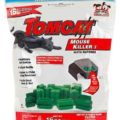Table of Contents
Managing a rat problem can be complicated. There’s a lot of factors that play into a rat’s decision to nest, breed, and live out their lives—whether that’s in nature or in your garage. Setting effective rat traps involves knowing how a rat thinks, choosing the right location for the trap, and knowing which baits to use for the rat in question.
So, which baits are the best for catching rats using traditional rat traps? The answer is a little more complex than you might think. In this article, we’ll be looking at a variety of different rat trap baits and we’ll be considering the pros and cons of using each of them.
What to Put in a Rat Trap
We’re going to presume that you’ve already decided which rat trap to use. Perhaps you’ve even invested in an electronic rat trap like the Rat Zapper. You’ve determined the best location to place your rat trap based on the nighttime feeding and foraging behavior of rats. Ideally, you’ve also considered the safety of other animals, including pets and small children.
The last piece of the puzzle is to choose what bait to use to lure the rats into your traps. Before making your selection, it’s important to keep in mind that finding the best bait for your specific rat issue might require some experimentation. Even though rats are known for eating virtually anything organic, they can also be fairly finicky if they sense that there might be danger involved in consuming something.
As a general rule, it’s not a good idea to use poisoned baits to lure rats into a rat trap. Poisoning rats and trapping them are two different approaches to resolving a rat infestation, but combining them can be inhumane and/or ineffective, as many rats learn very quickly where the ‘bad food’ is.
If one of the baits listed below doesn’t seem to be doing the trick, swap it out with an alternative and see if your results improve.
Rat Bait Alternative #1: Chocolate
It may sound strange, but many rat species love a lot of the same foods that humans do. Perhaps that’s why rats have lived alongside humans for so long—there’s an almost unending food source for them in our garbage bins, food stores, and grain silos.
It’s common to think that rats love cheese the most, but this is, in fact, a myth! Consider using chocolate instead, as it has a far-reaching smell that really pulls rats in. Also, it ‘stays’ fairly well, as resistant to molding and rotting as it is. Also, chocolate is a firm, rigid substance, and rats love chewing on things that are brittle or hard, as it helps to sharpen their constantly growing teeth.
Even though many forms of chocolate (especially dark chocolate) are toxic to dogs and other animals, rats have no problem ingesting and processing it. So, chocolate is a fantastic, humane rat trap bait option.
Rat Bait Alternative #2: Peanut Butter
Like chocolate, peanut butter is a great bait to use in your rat trap. It’s non-toxic, and it gives off a fatty, nutty odor that rats find irresistible. What’s more, peanut butter that has been sitting for a while will harden, yet another attractive feature for hungry rats.
Peanut butter is the base ingredient for many commercially available rat baits, but you’re probably better off using just plain old peanut butter from the pantry. It’ll save you money, and you won’t have to worry about storing your rat-specific peanut butter among your other food products.
Rats digest peanut butter very well, and it poses no health risk to them (aside, of course, from obesity if they eat too much!).
Rat Bait Alternative #3: Conditional Baits
What is attracting the rats in the first place? Is it stored bird seed? Perhaps there’s some dog food lying around that is bringing the rats in. Or, maybe some other organic material is acting as a beacon for rat activity.
Using the main rat attractant as a bait is a fantastic way to confuse and trap the rats you want to remove. This ‘conditional’ use of rat bait is great, because you don’t have to actually go out and buy anything. Simply use whatever is attracting the rats as the bait itself, and you’re likely to see success in catching the rats.
Not sure what is attracting the rats? Create a DIY lure including multiple substances. Add in some grains, food pellets, or other source of protein (dried meats work especially well for this), and before long, you should figure out what the rats prefer most. Once you’ve arrived at the most effective bait, you can hone in on shoring up your rat problem from there.
Rat Bait Alternative #4: Nesting Materials
Did you know that sometimes, the most effective rat trap bait isn’t food at all? It might actually be small pieces of twine, rope, or cotton. The reason for this is because many rats—especially female rats building a nest—are always on the hunt for materials they can use to construct their homes.
Consider using some of the following materials as bait for your rat trap:
- Cotton balls
- Cotton swabs
- Dental floss
- Inkless paper
- Tissue
- Paper towel shreds
- Aspen or hardwood shavings (avoid cedar or pine)
- Scraps of wool
As mentioned earlier, it might help to experiment with these materials to see which ones are most effective.
Conclusion
Rats are incredibly creative and highly intelligent animals that rely on stealth and cunning to avoid threats, raise their young, and thrive even in the toughest environments. This can make them especially difficult to trap, which means that outsmarting the rat is priority number one.
Using an effective rat trap bait is crucial to the overall success of any rat control strategy. In this article, we’ve discussed some of the most common rat trap baits, including baits that aren’t even food-based.
With the right combination of rat trap styles (like the ‘Walk the Plank’ or ‘Rolling Log’ bucket-style rat traps) and the right rat trap baits, you should be able to resolve your rat problem quickly and effectively. Good luck!





